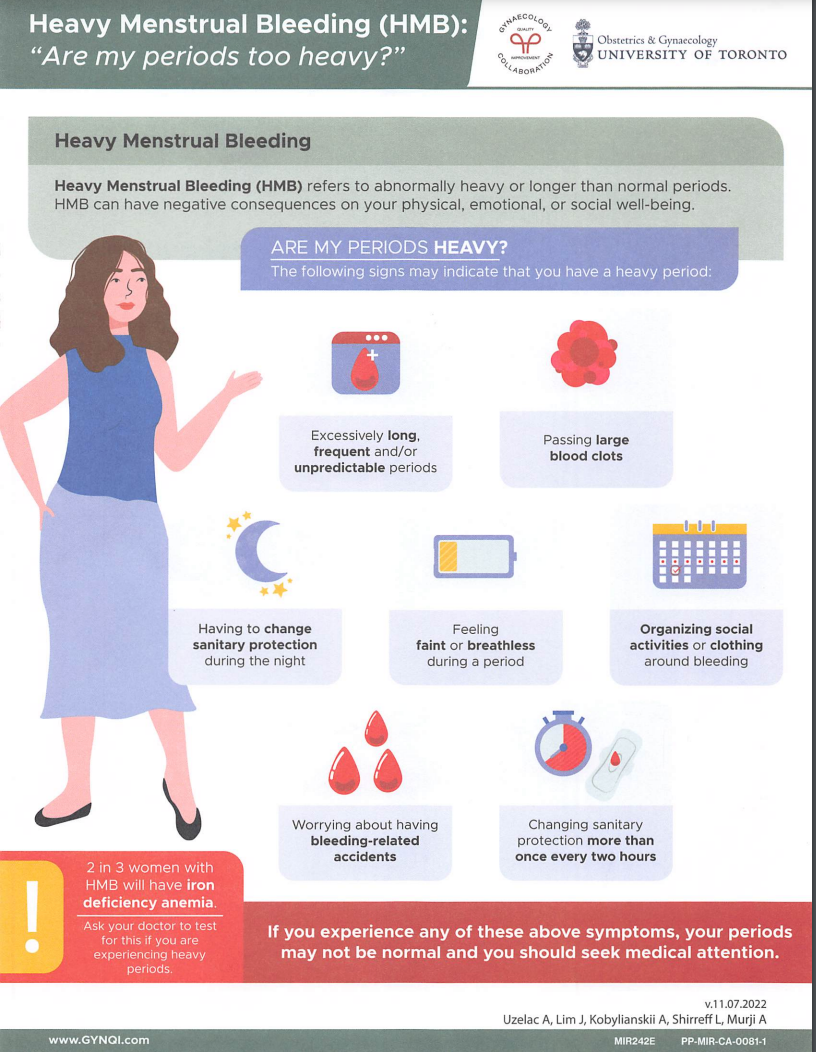Menstrual Cycle
Heavy Menstrual Bleeding
Heavy menstrual bleeding can be uncomfortable and sometime painful interfering with everyday life. There are many management as well as treatment options that are available for you, these should be discusses with your physician. There are many factors that could be causing heavy menstrual bleeding such as; bleeding disorders, structural changes (like fibroids, endometriosis etc.), hormones, medications and, more.
-
Menstruation or having a period occurs when the lining of the uterus sheds which occurs when there is no pregnancy. A menstrual cycle occurs over the span of around 28 days and consist of the follicular, ovulatory and luteal phase.
Follicular Phase: Day 1-14 of menstrual cycle, where day 1 is marked by menstrual bleeding. A hormone called follicular stimulating hormone as well as estrogen are produced during this phase. Increase in estrogen promotes growth of the uterine lining. As well a hormone called luteinizing hormone which stimulates ovulation.
Ovulatory Phase: Occurs on day 14 when there is an increase of luteinizing hormone that causes release of an egg.
Luteal Phase: Occurs during day 14-28 of cycle. There is a decrease in luteinizing and follicle stimulating hormone and an increase in both estrogen and progesterone. This stimulates significant thickening of the uterine lining.
-
Premenstrual Syndrome or PMS describes symptoms experienced in the days before menstruation occurs. Symptoms of PMS can include physical symptoms like breast tenderness, muscle aches, low energy and changes in appetite. It can also include mood and behaviour symptoms like increased irritability, anxiety, sadness and difficulty focusing.

